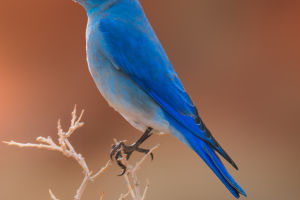Mysterious and elegant, cats have always attracted people's attention for their keen senses and unique behaviors.
Their vision is particularly fascinating, not just because they can see in the dark, but because their visual systems are significantly different from humans.
Exploring cats' vision not only allows us to better understand these fascinating animals but also helps us better care for them.
Cats' Visual Structure
Cats' eye structure is similar to humans, but there are some key differences. Cats have more rod-shaped cells in their retinas, which are responsible for sensing light in low-light conditions.
As a result, cats can see much better in the dark than humans, and they can see their surroundings in only one-sixth the light required by humans. In addition, cats' pupils can dilate greatly to allow more light into the eyes, thereby enhancing vision in dim environments.
Color Vision
Although cats have excellent low-light vision, their color vision is relatively weak. There are three types of cone cells in the human retina, which are sensitive to red, green, and blue respectively, so we can see a colorful world.
Cats only have two types of cone cells, one sensitive to blue and one sensitive to green. This means that cats have a limited perception of color, especially the color red. In the cat world, red may look more like gray or dun.
Vision Range
Cats also have a different range of vision than humans. A human's viewing angle is about 180 degrees, while a cat's viewing angle can reach about 200 degrees, which allows them to better monitor their surroundings when hunting.
However, cats have weak central vision (clear vision directly ahead). They rely primarily on peripheral vision to sense movement and catch prey. This characteristic explains why cats often keep their eyes fixed on their target while hunting and then react quickly once their prey starts to move.
Dynamic Vision
Cats' dynamic vision is also very well developed. They can track fast-moving objects and react quickly to small changes in motion.
This ability is an important advantage for cats as hunters, allowing them to efficiently hunt fast-moving small animals such as mice and birds.
Research has shown that cats have special nerve cells in their retinas that are particularly sensitive to rapid movements and can help cats accurately locate targets when hunting.
Myopia or Hyperopia?
Although cats have excellent dynamic and low-light vision, their ability to see far away is not as good as humans'. Cats' eyes have evolved to be better suited for close-range viewing, especially when catching small prey at close range.
This means cats' vision becomes blurry when looking at distant objects. Therefore, cats are better at observing and catching prey within their range of activity rather than distant targets.
Vision and Health
Understanding cats' vision also helps us better care for them. For example, as cats age, their vision can deteriorate, leading to conditions such as cataracts and glaucoma. These conditions can significantly affect a cat's quality of life, making regular eye check-ups and early treatment crucial.
Additionally, providing a safe and comfortable environment is essential for cats with impaired vision. This involves ensuring there are no sharp objects or obstacles in their living area to prevent injuries.
Cats' vision is a remarkable aspect of their evolutionary adaptation to their environment. Although their color vision is weaker compared to humans, their excellent low-light vision, wide viewing angles, and keen perception of dynamic objects make them efficient hunters.
Understanding these characteristics not only gives us a deeper insight into the world of cats but also helps us better care for and understand these mysterious friends. By providing appropriate toys and environmental stimulation, we can meet cats' visual and movement needs, keeping them healthy and happy.


